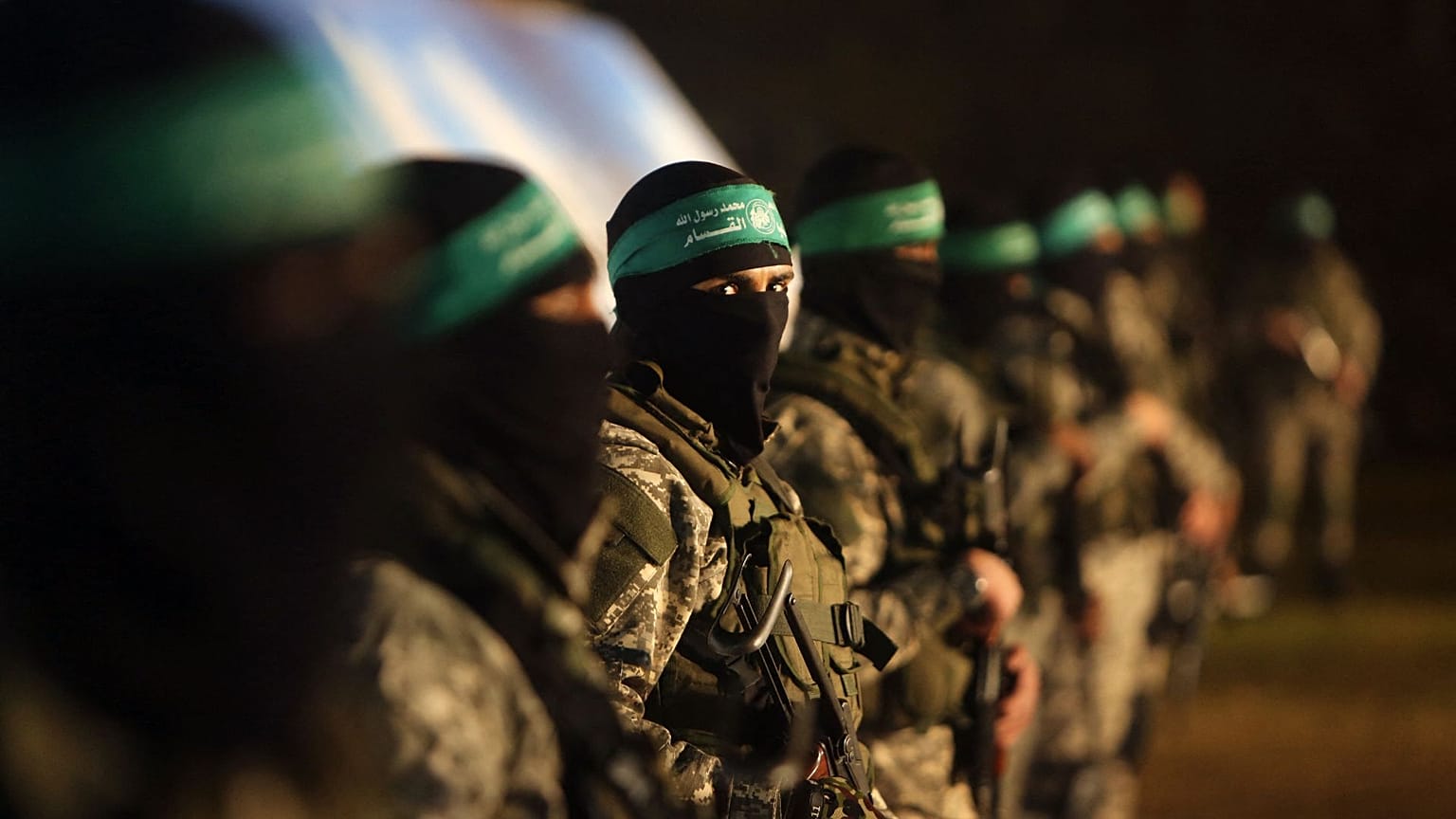Hamas' attack on Israel was highly expensive - Euronews takes a closer look at where the allegedly financially isolated group's money is coming from.
Hamas’ unprecedented attack on Israel last week required huge financial resources.
The EU-designated terrorist group used drones, cyberattacks and between 2,500 and 5,000 rockets in a single day. By comparison, they used the same amount of weaponry over a period of 11 days two years ago, suggesting that their resources have vastly increased.
But as a designated terrorist entity, Hamas is subject to sanctions and has been cut off from the international banking system. Any attempts by the group to raise funds are tackled by global counter-terrorist financing efforts.
Yet, Hamas was named one of the richest terrorist groups in the world by Forbes in 2014.
Their annual turnover back then was estimated to reach as much as $1 billion (€942 million), coming from taxes and fees, financial aid and donations.
But are these the only sources of their funds?
Could cryptocurrencies have financed the attack against Israel?
The world’s largest cryptocurrency exchange, Binance, has frozen hundreds of crypto accounts associated with Hamas, following requests from Israeli law enforcement on Tuesday.
The Wall Street Journal reports that digital-currency wallets connected to Hamas received about $41 million over the past two years, citing the data of Tel Aviv-based crypto analytics and software firm BitOK.
The Palestinian Islamic Jihad, another terrorist group suspected of taking part in the attack, received $93 million in crypto during the same time, based on crypto researcher Elliptic’s data.
Hamas has endorsed crypto as a fundraising method for years, but said in April it would stop receiving fundraising via the cryptocurrency Bitcoin, citing an increase in "hostile" activity against donors.
Iran’s support and donations
While many are speculating whether or not Israel's nemesis Iran helped finance the recent attack, it’s widely agreed that Tehran funds Hamas to the tune of an estimated $100 million a year, according to the US government.
Hamas also benefits from the financial support of several countries such as Qatar and Turkey. However, these countries don't directly fund the group's military activity, so it's difficult to trace where the money ends up being used.
Palestinian expatriates and private donors in the Persian Gulf provide a lot of the movement’s funding.
Hamas also collects a so-called Zakat, an Islamic charitable donation, to carry out its missions and goals.
Furthermore, the group carries out fund-raising activities abroad, including the Gulf countries, Western Europe and North America.
Hamas-affiliated charities do not officially fund the groups’ armed wing but rather its social welfare activities.
However, some of these charities end up being labelled terrorist organisations themselves, such as the Relief Fund for the Afflicted and Needy in Ottawa, which was found to have funnelled approximately $14.6 million worth of resources to various groups affiliated with Hamas between 2005 and 2009.
Funded by taxes
Every month, Hamas collects between $12-15 million from taxes it imposes on goods coming from Egypt, the most taxed products being cigarettes, fuel and even construction materials.
Furthermore, the group imposed new taxes on imported West Bank products in 2022. This has hit those already living in extreme poverty in the Gaza Strip particularly hard.
The unemployment rate in the coastal enclave has reached 45%, according to the Palestinian Central Bureau of Statistics, and more than 60% of Gazans need humanitarian assistance.
As of July 2022, the food insecurity rate in Gaza topped 65%, and the poverty rate stood at 65%, as per the same report.
Companies and investments
Hamas has a branch dedicated to amassing funds.
German reports said in 2022 that Hamas had managed to gather more than $500 million (€471.5 million) in assets by investing in companies in Turkey, Saudi Arabia, Algeria and even Sudan, mainly in real estate or construction.
However, the US Treasury Department took immediate sanctions against individuals linked to these financial arrangements, yet it can be assumedthat the group hasn't given up this activity.
Who's paying the price?
As things stand, it's possible that the aid offered to the people living in extreme poverty in Gaza will become subject to investigation, to ensure it doesn't fall into the wrong hands.
The European Commission has said it will carry out an "urgent review" of the development assistance the EU has allocated in the past three years, worth €681 million, to ensure that they have not been funding Hamas.
Following criticism of an announcement that the EU would suspend all financial aid to Palestine, the Commission assured that it is committed to sending €27.9 million in humanitarian aid to the Gaza Strip this year.
Gaza’s economic situation was already dire before Hamas’s 2023 assault on Israel, and the ensuing war is almost certain to exacerbate the extreme poverty of its residents.


















